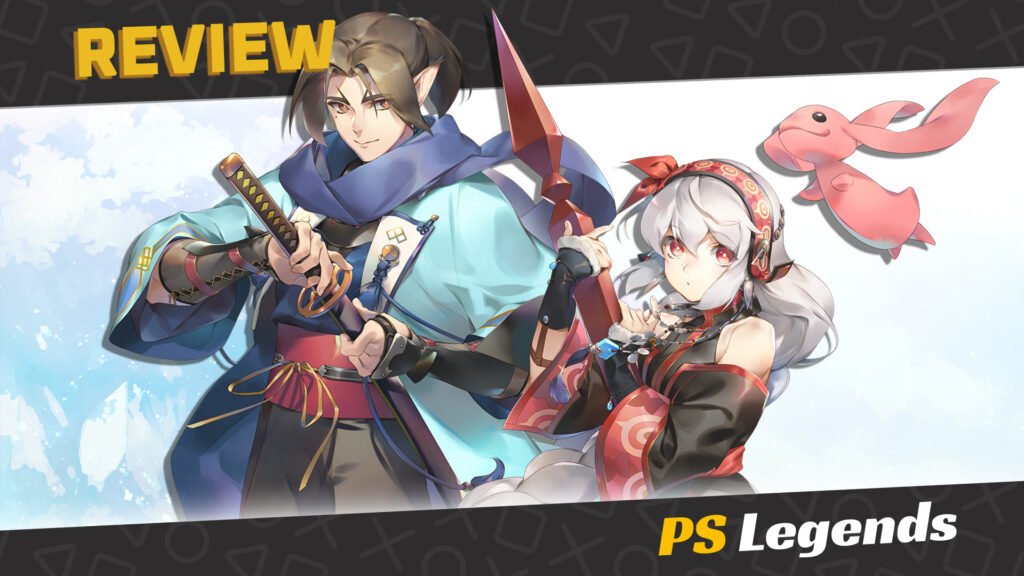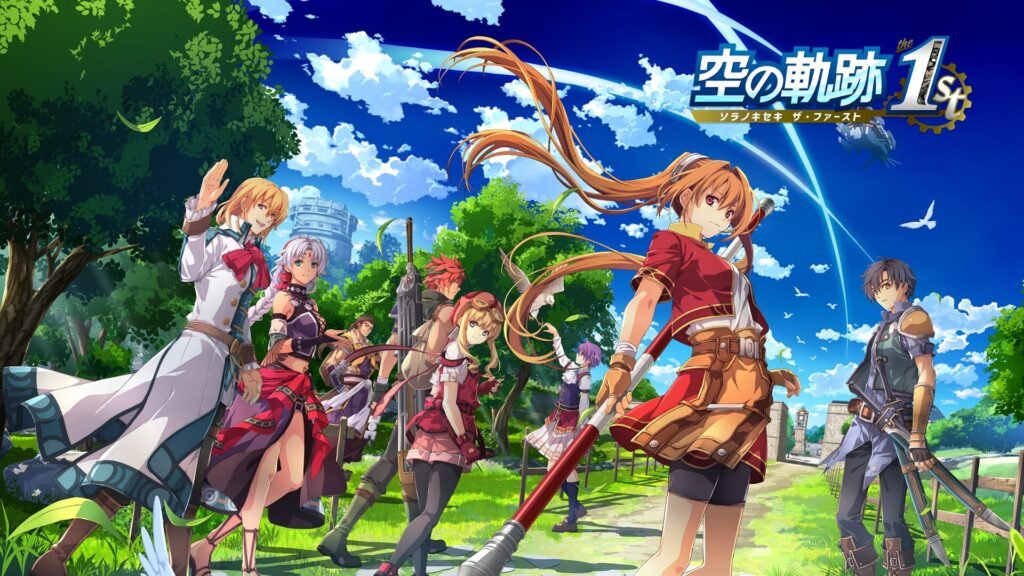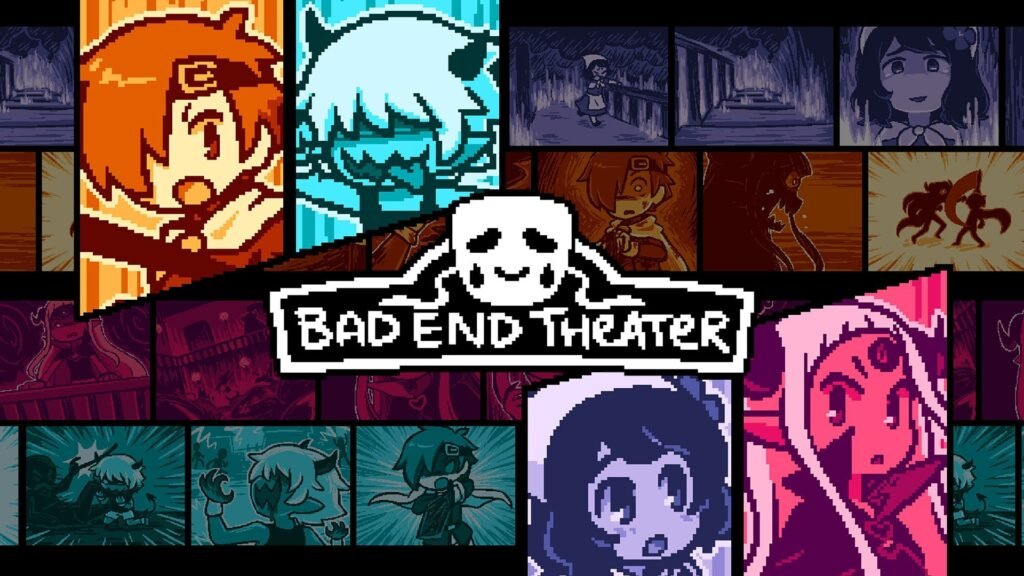It’s always nice to see a developer throw everything they’ve got into expanding a beloved franchise, maybe even mixing up their formula to bring in new fans with something bigger, bolder, and maybe even better.
Admittedly, I’m not too familiar with the Utawarerumono series of quirky visual novels featuring dynamic characters and classic anime themes, but the small but passionate fanbase of the series is always happy to sing its praises.
Introduction
Beginning as an adult-themed series of PC visual novels featuring turn-based combat sections, and with an accompanying manga series, the series was enhanced and expanded (and yet also censored) for console release, eventually making their way west on PS4. The success of the games also saw them remade as musou-style action RPGs, beginning with Utawarerumono ZAN.
With a new console generation came renewed interest in revisiting, restarting, and reinterpreting the story. Monochrome Mobius: Rights and Wrongs Forgotten is a JRPG developed by Aquaplus and Design Act, and published by NIS America. The game is a prequel to the Utawarerumono series of visual novels, created in commemoration of the series’ 20th anniversary, released for PlayStation 4 and PlayStation 5 in September 2023.

Story
Monochrome Mobius: Rights and Wrongs Forgotten is set prior to the events of Utawarerumono: Mask of Deception and switches its focus to secondary character Oshtor. In the province of Ennakamuy that borders the Yamato Empire, a young Oshtor resides with his mother and younger sister. During an investigation assigned by his local lord, Oshtor is sent to track down a young thief.
Oshtor chases the thief outside town where she ambushes him. The mysterious girl reveals her name is Shunya, and claims to be his sister. Shunya tests Oshtor’s abilities in a duel, also revealing she possesses magical abilities, though Oshtor manages to prove his skill and overpower her, earning him her trust.
To Oshtor’s further surprise, Shunya informs him that his father, who was previously believed to be deceased, is actually still alive. Shocked by this revelation, but seeing a hint of a family resemblance in Shunya, Oshtor partners up with her and the pair travel to a hidden country which cannot be found on any map, Arva Shulan, beginning the pursuit of his father and the truth behind his disappearance.
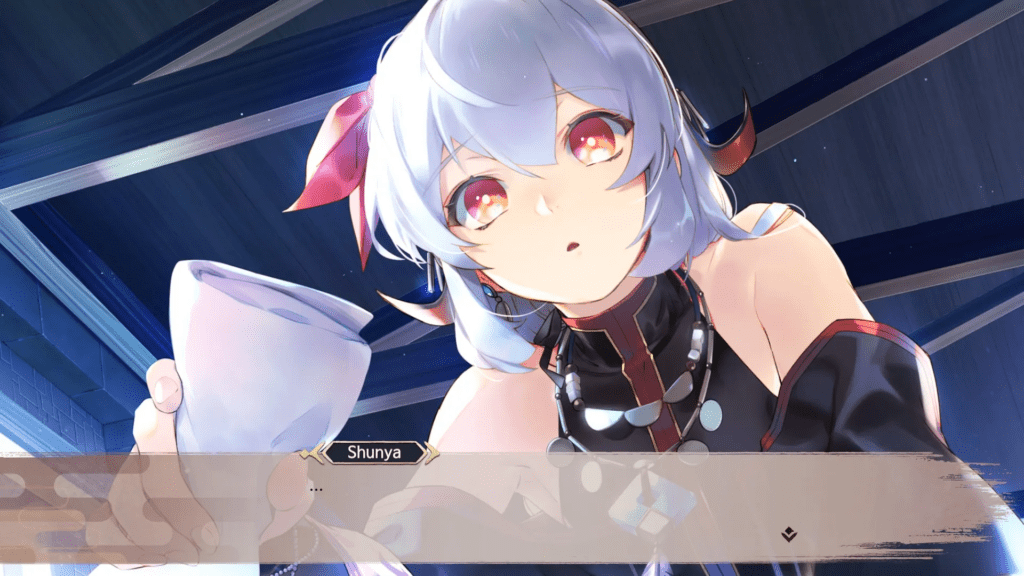
Gameplay
Monochrome Mobius features a traditional turn-based combat system, fully 3D characters and free camera movement in the field. It also features exploration and plays like a standard JRPG in contrast to the grid-based tactical role-playing system and visual novel elements found in the previous mainline titles of the Utawarerumono series. The player issues commands to characters to initiate attacks, use items and tools, and change tactics.
During combat encounters, a circle in the top-left corner of the game screen, known as the ‘Action Ring’, indicates the current turn order of participants and comprises three inner rings. After each turn, the units rotate clockwise on the inner rings and the further they are from the end of an inner ring, the longer they will have to wait for their next turn.
Units on the innermost ring will have the most frequent turns, however the player can manipulate the turn order to enter the innermost ring, either by staggering opponents and attacking them while they are in a staggered state to cause them to collapse, or by activating an ‘Ascend’ combat state which is unlocked by filling the ‘overcharge’ gauge completely. Overcharge accumulates by dealing damage, receiving damage, or by defending.
Outside of battle, you are free to select which character you want to control in the field by using L1 and R1 to cycle through the characters in your party, however in towns, you’ll only be able to control Oshtor. Also in the field, you can sprint temporarily by holding R2, until your dash gauge depletes and you’ll need to wait a short time before you can dash again. The Field Screen displays a mini-map showing the area around you, however you can also press Square to open an expanded area map.
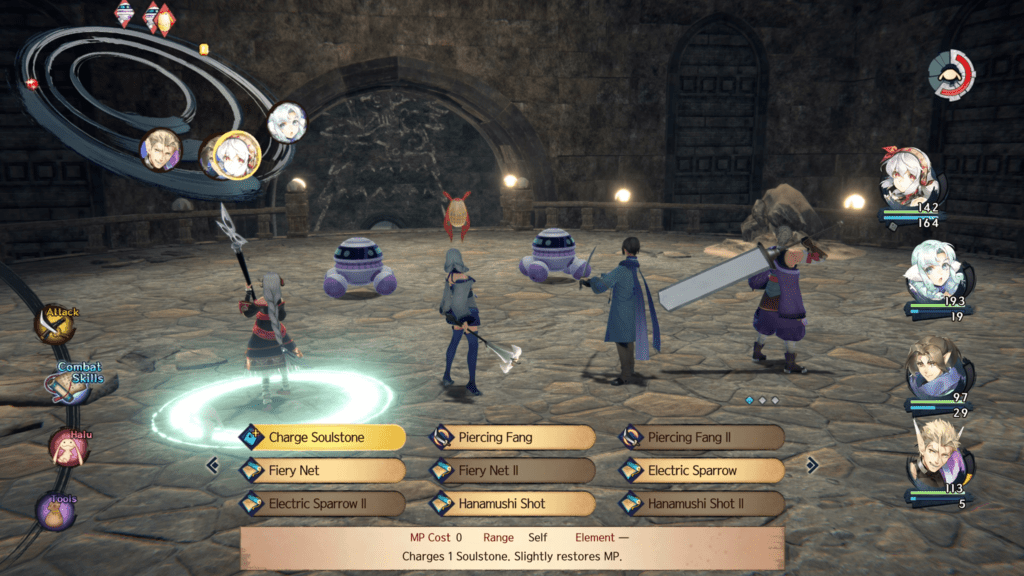
Graphics/Sound
Music was clearly a key element for the development team, who placed significant emphasis on the soundtrack matching the environmental storytelling. Over 100 tracks were recorded for the soundtrack, which has a distinctive PS2/PS3 era feel to it, with frequent use of flutes and panpipes to produce simple melodies rather than the grander, fully orchestral tracks of more recent games. Most are generic, atmospheric pieces, though others can sound a little odd and randomly slapped together, such as the title screen tune.
With the series originating as visual novels, cutscenes can be long and descriptive to make for an easier genre transition, yet this can be a chore on tired eyes as the game is only dubbed in Japanese, giving us a lot of reading to do. Not all cutscenes use a 2D visual novel aesthetic, with many using the standard 3D character models to greater effect.
Moving away from the grid-based tactical combat found in the visual novel trilogy, Aquaplus wanted the character designs to be distinguishable from past entries to make the game feel like a brand new work, and it really shows. Taking care to ensure the new designs of younger returning characters from previous titles were not dramatically changed so as not to displease long-time fans, character designs are highly respective of their traditional anime origins while also converted into more detailed, cel-shaded models.
Environments are absolutely stunning. Every rock face is a random mix of illuminated convex protrusions and shadowy concave indentations. Blades of grass sway in the gentle breeze and every tree has unique branch formations, different from the last. The game hides its middling budget incredibly well, rarely looking out of place on current hardware.

Conclusion
There’s a very welcome nostalgic beauty to Monochrome Mobius which I’m confident most JRPG enthusiasts will love. This is by no means an indication that the game’s visuals have an outdated look to them; far from it. The world of Monochrome Mobius is absolutely gorgeous at times, and makes for a captivating journey of pleasing aesthetics.
Rather, Monochrome Mobius feels like a forgotten branch of the classic JRPG. Where the PS3 era (and beyond) of JRPGs seemed to be rather dominated by Compile Heart/Idea Factory heavy-hitters which utilise similar themes of beautiful, super-colourful anime characters, moderate fan service, and more lighthearted storytelling featuring comedic dialogue, Monochrome Mobius feels like an evolution of classic PS2-era JRPGs instead.
There’s more emphasis here on a personal journey, a more serious story with characters that grow together, forging bonds through battle rather than textbook friendships. This isn’t to say the game is more depressing, but one comprised of the quieter, largely culturally disconnected lands, not unlike Grandia, Wild Arms, and even Shadow Hearts, rather than the upbeat globetrotting of Nexomon, Neptunia, and the newer Tales games.
Monochrome Mobius is an impressive adventure, and an ingenious way of inviting in a new wave of players into an interesting universe which was previously limited by the stigma affixed to visual novel storytelling. As a standalone adventure, the game may not offer much in the way of playable characters or experimental new mechanics, yet there’s more than enough here to please JRPG fans, who will hopefully return for the game’s rumoured sequel.
Joys
- Superb visuals, especially in the environments
- Interesting, fleshed-out storytelling
- Simple, familiar interface
Cons
- No English dub
- Only four playable characters
- Some music tracks sound a little odd
